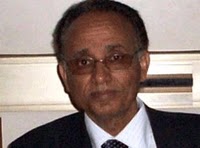According to Mahmoud Ismail Haj and Suleiman Ibrahim, had the armed struggle been led by the ELM, whose leaders Eritrea would have been spared the agonies of the civil war and the other tragedies that befell it and its people. This because the ELM was secular and non-sectarian, however the ELM no longer exited by the time civil war broken out in 1972 between the two main liberation forces, the ELF and the EPLF. That war cost many lives. It also cast a sectarian shadow over the struggle for independence that affected the dispensation of independent Eritrea (Kibreab 2008: 151-152]
The ELM's ideal of a secular Pan-Eritrean nationalism, activated through its politics of protest and reconciliation was never forgotten in the history of the Eritrean people struggle for independent. Alsayed (2009) states that the ELM would have probably managed to produce a nationally united leadership that would have led a united people through a “blue and green olive” revolution to our final independence at a far less cost to our lives and properties
Alsayed adds that for the first and perhaps last time in Eritrea’s troubled history, the ELM managed to appeal to Eritrea’s diverse society and united Eritrean Muslims and Christians, Highlanders and Lowlanders. It infiltrated institutions such as Eritrea’s police force, it spread its organisation and mobilisation cells of 7 (famously known and still remembered by our Kebessan counterparts as “Mahbar shaw3atte” and in the lowlands/Muslims as “Haraka or Haraket”).
Following the liquidation of the military wing of the ELM, its forces disintegrated and former ELM members to continue their struggle joined the ELF According Gebre-Medhin (1989:171) with the demise of the ELM, workers and intellectuals who had belonged to it turned to open resistance. Gebre-Medhin adds that in a matter of a few years the social composition of the fighting forces in the ELF began to change. Pool (2001:52) and Ammar (1997:75) also point out that most of those who joined the ELF army in the mid-1965 came from the Christian and Muslim population who were better educated and member of the ELM Harakat members, their belief “Muslims and Christians are brothers, and their unity makes Eritrea . However on, their arrival created tension and conflict in the organization due to the change of social composition of the Eritrea Liberation Army (ELA).
Prior to 1965 the ELA was composed entirely of emancipated serfs from the lowland and dominated by Muslims from Western Eritrea.
As a result of the tension that arose between the Highlander and Lowlander combatants who seeking greater democracy, and the old ELF leadership deliberately divided the Eritrea Liberation Army by region and ethnicity by establishing five military zones based on a territorial, region and ethnicity . . Ato Woldeab and Ato Ibrahim were concerned at its consequences and both of them sent a message of unity and reconciliation to the Eritrean Liberation Army. This period (1965-1968) of division in the history of the Eritrean armed struggle is called Zemene Kiflitat
Despite the ELF in its publication of 16 years of armed struggle that it had introduced a new strategy of dividing the army into 5 military zone to confront the counter-insurgency commandos (ELF 1977:38),the true reason for its division into military zone was to control these conflicts which might be triggered between the old and new political trends. Following the formation of five military zones based on a territorial division, the fierce power struggle within Supreme Council exacerbated the mutual suspicion and hatred among the fighters which led of splitting the ELF in 1970.
During the Zemene Kiflitat (Zone) the leaders of each zone, and in most cases the fighters, were required to join the zone that represented their ethnicity and place of origin.
According Kibreab (2008:153) the only exceptions were the Eritrean Christian highlanders who, until 1966, were distributed among the four zones. The Supreme Council did not originally create a Christian Zone because the central highlanders were the most industrialized and politically advanced area of the country and they feared an influx of Christian workers and students as a major threat to their power base.
The ELM’s path for liberation and independence was interrupted and later replaced by the ELF. Thirty years later we can clearly see the strategic error committed by the founders of ELF. The price paid in lives and properties, but also to our social fabric and cultural values, including the refugee exodus (mainly from the Muslim/Lowland areas), A/Rahman Alsayed - Aug 05, 2009. [readmore]
Gaim point out in his book many of the other groups formed in the 1960s and 1970s, such as the ELF, PLF 1, Sduha Eyla Group, the Self Natsenet of Ala Group, Obel Group were based on distinct ethnic identity and they became fragmented and the first two gradually became subsumed into the larger EPLF. Both Mahmoud Ismail Haj and Suleiman Ibrhaim, who were active members of the ELM, argue that most ELM members were politically conscious and experienced members of political and civil society associations and debates |



